At the Sedgwick County Zoo, if you pass the lions and stand across from the zebras, you’ll be in front of an oval habitat with a moat. Four canids call this place home. They have black and tan fur, rounded ears, and dark snouts. If you stand near the habitat long enough, you’ll probably see a child or even an adult point and say with complete confidence, “that’s a hyena.”
But it’s not a hyena. It’s an African painted dog.
“Hyenas, or at least spotted hyenas, are larger than painted dogs, and they have more of a hunchback figure. And they’re less fluffy,” Zookeeper Melanie Lash said. “They just have a denser body than the dogs. The dogs are much leaner and lankier.”
Painted dogs are the largest wild canines in Africa. Predominately found in Sub-Saharan Africa, they once covered the entire continent.
“Primarily, they stick to the sub-Saharan open plains, but they can live in deserts, forests, grasslands,” Lash said. “They’ve got a pretty diverse habitat capability.”
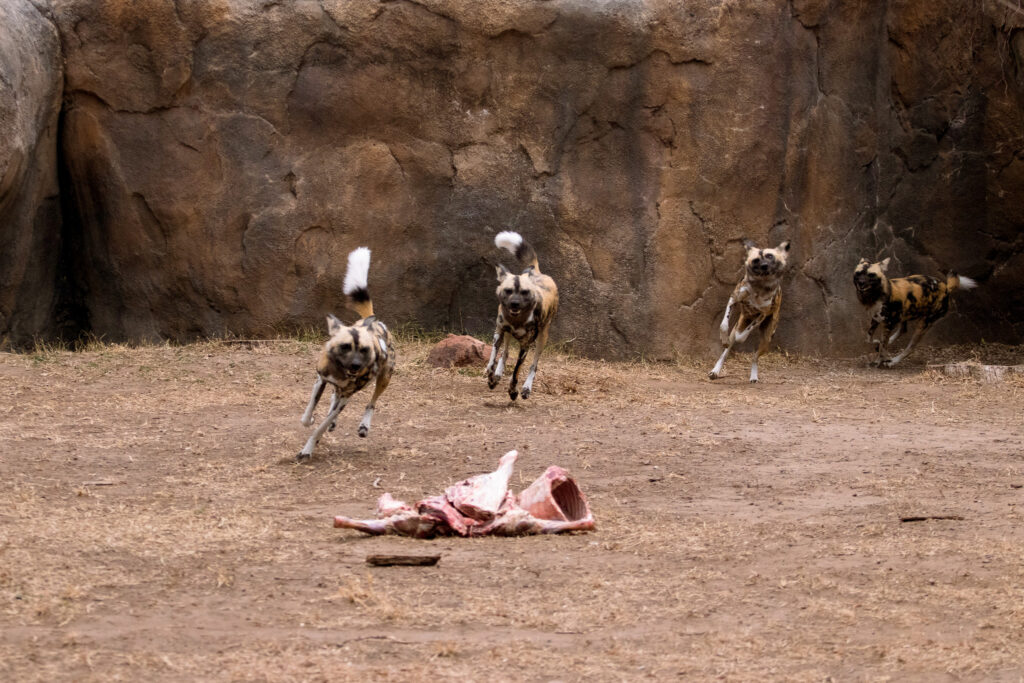
Painted dogs live on an all-meat diet and are the most efficient hunters in Africa. Persistence hunters, a pack of painted dogs will track and pursue their prey until it is on the brink of exhaustion, at which point they go in for the kill.
They have an 80% success rate when hunting.
“Their hunting is well orchestrated, it’s super smart,” Lash said. “They have a pack of 20; they only need four or five dogs running after this animal. So, they can trade out and basically keep their stamina going.”
Painted dogs live in large packs that consist of one alpha pair, who are the only ones allowed to breed. The rest of the pack is made up of siblings of the alphas and pups. The entire pack works together to raise the pups.
Once reaching maturity, the females leave to join other packs while the males stay. Unlike many pack animals, painted dogs live in a culture based not on dominance, but submissiveness.
“These guys are more submissive based,” Lash said. “A lot of their behaviors are submitting to those in charge, rather than pushing those below them off.”
Incredibly social, they look out for their own. After a successful hunt, it’s not the alphas that eat first, but the pups and the elderly.
“They let the youngest ones and the weakest ones eat first,” Lash said. “It’s those who need it eat first, and then it goes, basically weakest to strongest of who gets to eat.”
SCZ is home to four African painted dogs – Rowdy, Tito, Torgi (short for Torgerson II), and Ng’amba. They arrived in 2021 from the Endangered Wolf Center. This facility, founded in 1971 by Carol and Marlin Perkins of “Mutual of Omaha’s Wild Kingdom” fame, focuses on breeding programs to preserve and protect endangered canines.
SCZ’s painted dog pack will turn five in November 2023.
Lash says that Rowdy likes to explore and keep an eye on everything. And true to his name, he’s rowdy.
“Rowdy is our dominant boy,” Lash said. “A lot of times he’s the one involved in wrestling. He loves rolling on stinky things in the yard.”
Tito and Torgi are the middlemen on the painted dog pyramid.
“Tito spends a lot of time with Rowdy. Usually, Torgi kind of bounces back and forth,” Lash said. “I’ve definitely seen all four of them on multiple occasions all playing tag and trading off who’s running and who’s chasing.”
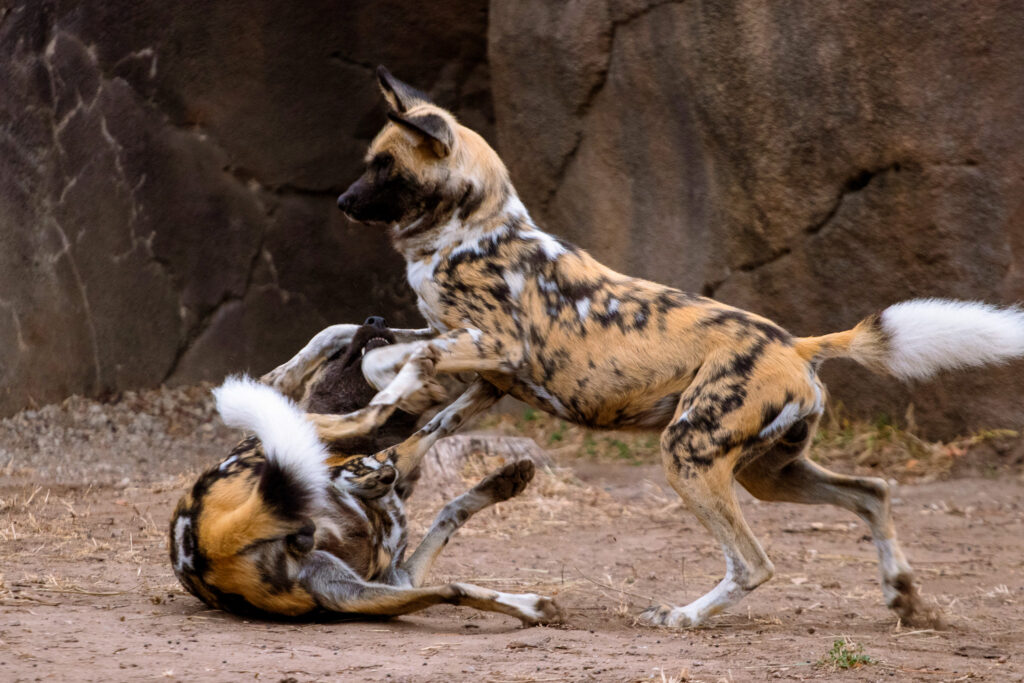
Ng’amba is the lowest in the hierarchy, but Lash says he’s the sweetest.
“He’s the one that’s sometimes off by himself, because he’s like, ‘you guys are a little too much. I’m gonna stay back in this corner. And I’m not gonna get involved because that’s a little rough’,” Lash said. “Of course, I do see him play tag too.”
These four brothers used to be a group of five. But in March 2023, Rasmussen, the fifth brother, was transferred to the Pueblo Zoo in Colorado. One of their painted dogs had died, leaving Akilah, an elderly female, with no companionship. Rasmussen was sent so that she could have company, and Lash said he’s doing great and fitting in perfectly.
While the band of brothers might have gone from five to four, they are still a tight-knit group. Lash said they’re often rough housing or playing tag or keep away. From their play, you can tell they’re siblings
“And just like people siblings they always want to know what toys the others have and if it’s better than what they have,” Lash said. “A lot of the times they’re sleeping on exhibit. They’re either in their den area to the side where it’s shaded, they can sleep in the grass. Sometimes they’re hard to spot because either the grass is tall or just their coloration; they blend in really well.”
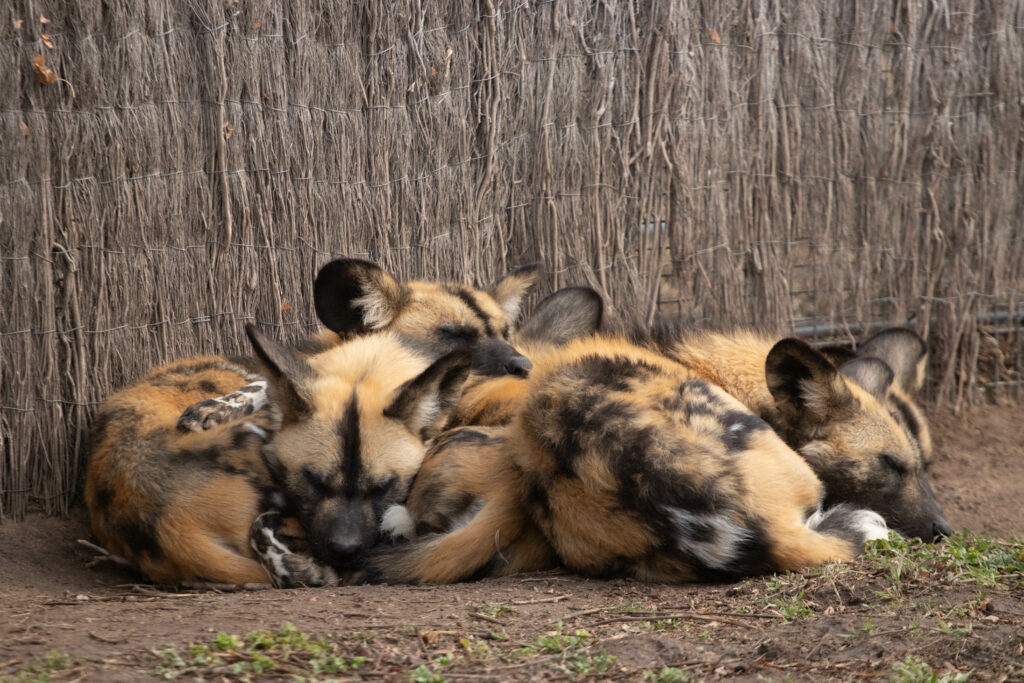
In the wild, painted dogs face many population threats. Loss of habitat and human-animal conflict play the largest role.
For more than a decade, SCZ has financially contributed to painted dog conservation organizations. The Painted Dog Research Trust is based just outside Victoria Falls between Zambia and Zimbabwe. PDRT was founded in 1992 by Dr. Greg Rasmussen, who serves as the executive director of the organization.
“Every year Dr. Greg tours the United States visiting zoos” SCZ’s Registrar Katie Kimble said. “He’s actually one of the conservationists that sees the value in zoos having a role in education and conservation efforts.”
This organization’s mission is to achieve meaningful conservation of African painted dogs using field-based data driven research, community-based education, and sound science.
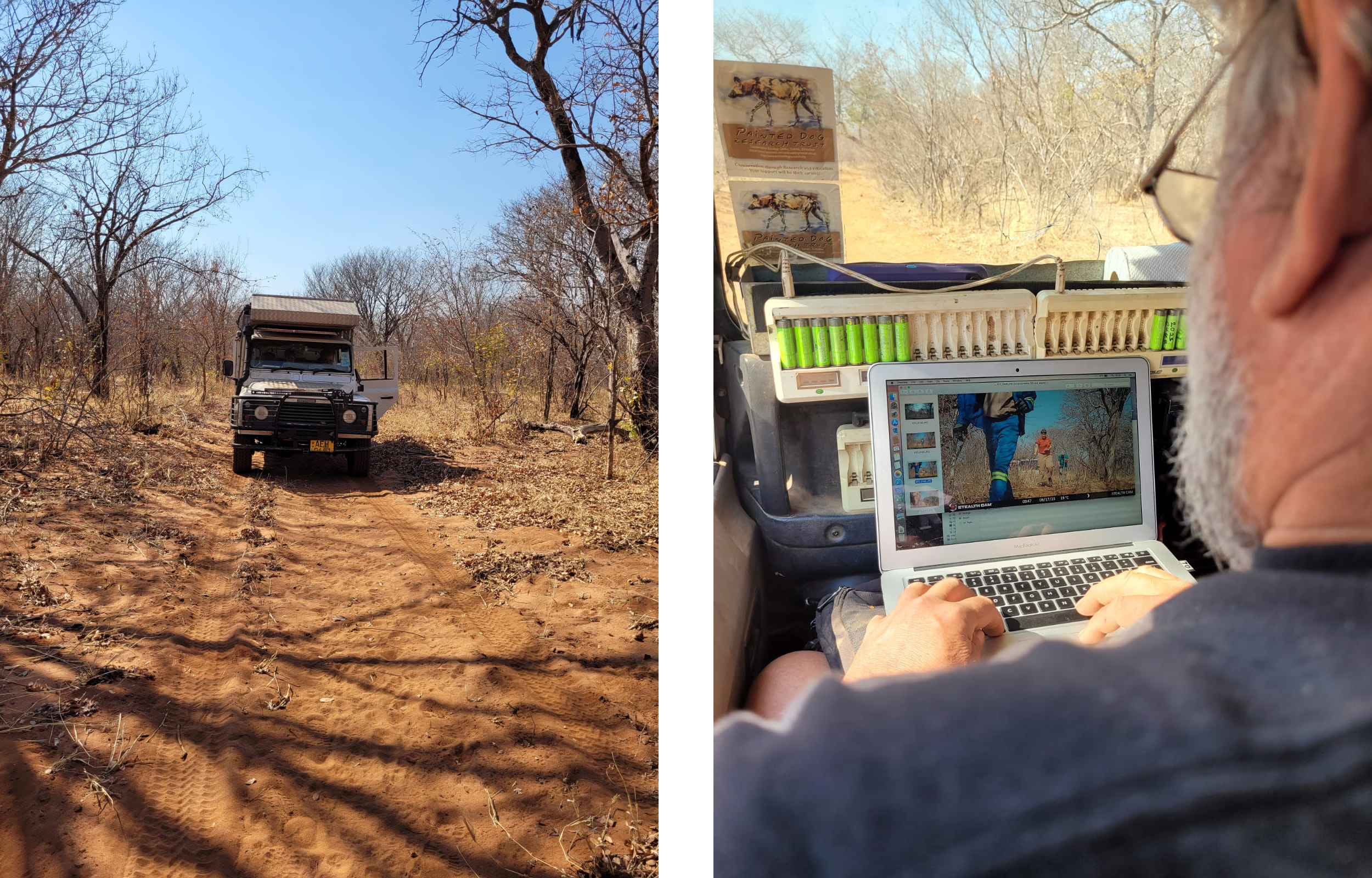
Kimble has gone to Africa to aid PDRT’s conservation efforts in 2022 and 2023.
“There’s only about 1,400 adults in the wild right now, which is a really low number. Typically, a good population of this type of species would be close to double that. And their populations are continuing to decline,” Kimble said. “The conservation efforts to try to save this species are really important.”
All of PDRT’s conservation goals are backed by science and data. Through educating others and understanding the repercussions humans have on the environment, effective change can take place.
One of PDRT’s projects involves reducing wildlife fatalities through driver awareness along the Kazungula road. This road runs more than 44 miles from Zimbabwe to Botswana. The road curves, and people have a tendency to speed on it. Recent data suggests that 4,000-8,000 animals die annually due to being hit on this road.
“It’s just cut straight through wildlife area. So, there is a lot of traveling from one side of the road to the other by wildlife,” Kimble said. “You get the combination of a lot of animals crossing the road, using the road. And then you’ve got that added to people driving fast, not paying attention, animals coming out of blind spots… It’s just kind of a perfect storm of this really unfortunate situation with roadkill.”
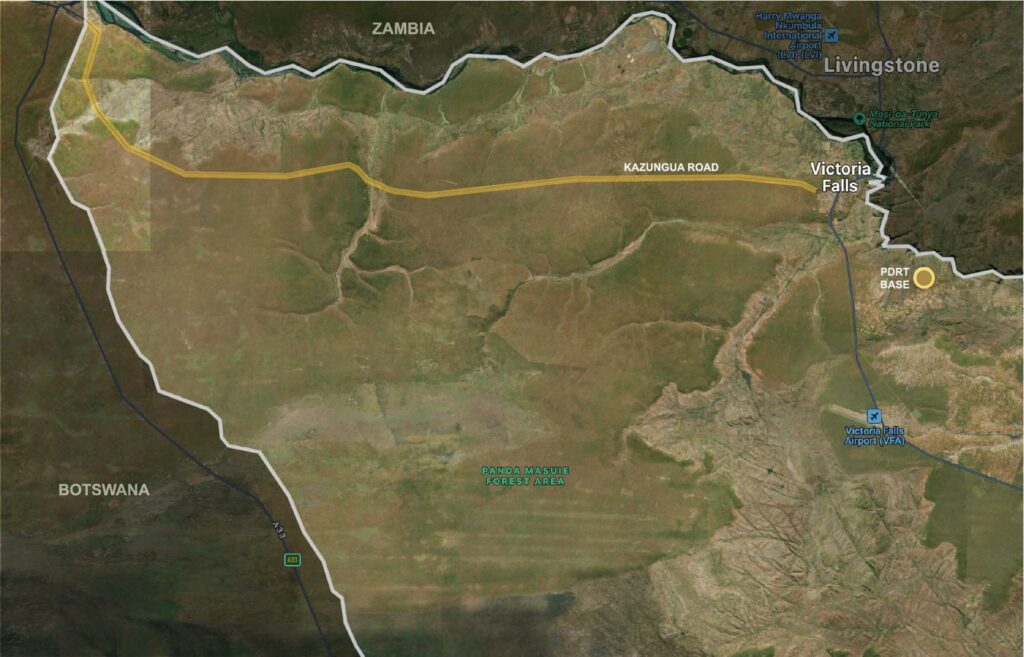
PDRT is developing several initiatives educating drivers about reaction times for breaking to avoid hitting animals, visibility changes during twilight and night hours, and animal use of the roads. The efforts of PDRT have shown real change, as they have noted a 6% speed reduction along the Kazungula road.
Habitat fragmentation and conflict with farmers also contribute to painted dog deaths.
“The primary challenges that painted dogs have are things like habitat fragmentation, conflict with farmers and livestock, snare traps, road accidents,” Kimble said. “All of them have one thing in common, and that’s that they revolve around interactions with people. And so, trying to do everything that we can to minimize those negative interactions is really important to their survival.”
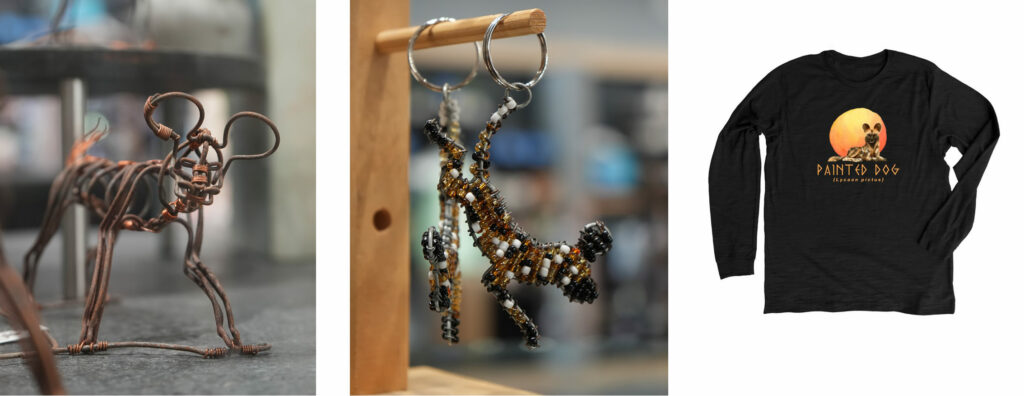
In the wild, painted dogs are often caught in snare traps. Snares like this have been collected and repurposed into artwork, which is available for purchase in the Sedgwick County Zoo’s Zoo Store. A shirt is also available through Bonfire. The proceeds from both of these items goes to the Painted Dog Research Trust.
African painted dogs play an important role in their environment. As apex predators, they help keep the populations of other animals in check.
“They’re all so smart,” Lash said. “I love their intelligence. I mean, their success rate at hunting is because of their intelligence, because of their capabilities of communicating.”
When visiting the Sedgwick County Zoo’s painted dogs, you might see Ng’amba playing in the moat, or Rowdy chewing on a bone. Maybe Tito and Torgi will be wrestling.
African painted dogs are endangered, but by visiting them in AZA accredited zoos and learning more about them, we can work together to ensure their continued survival.